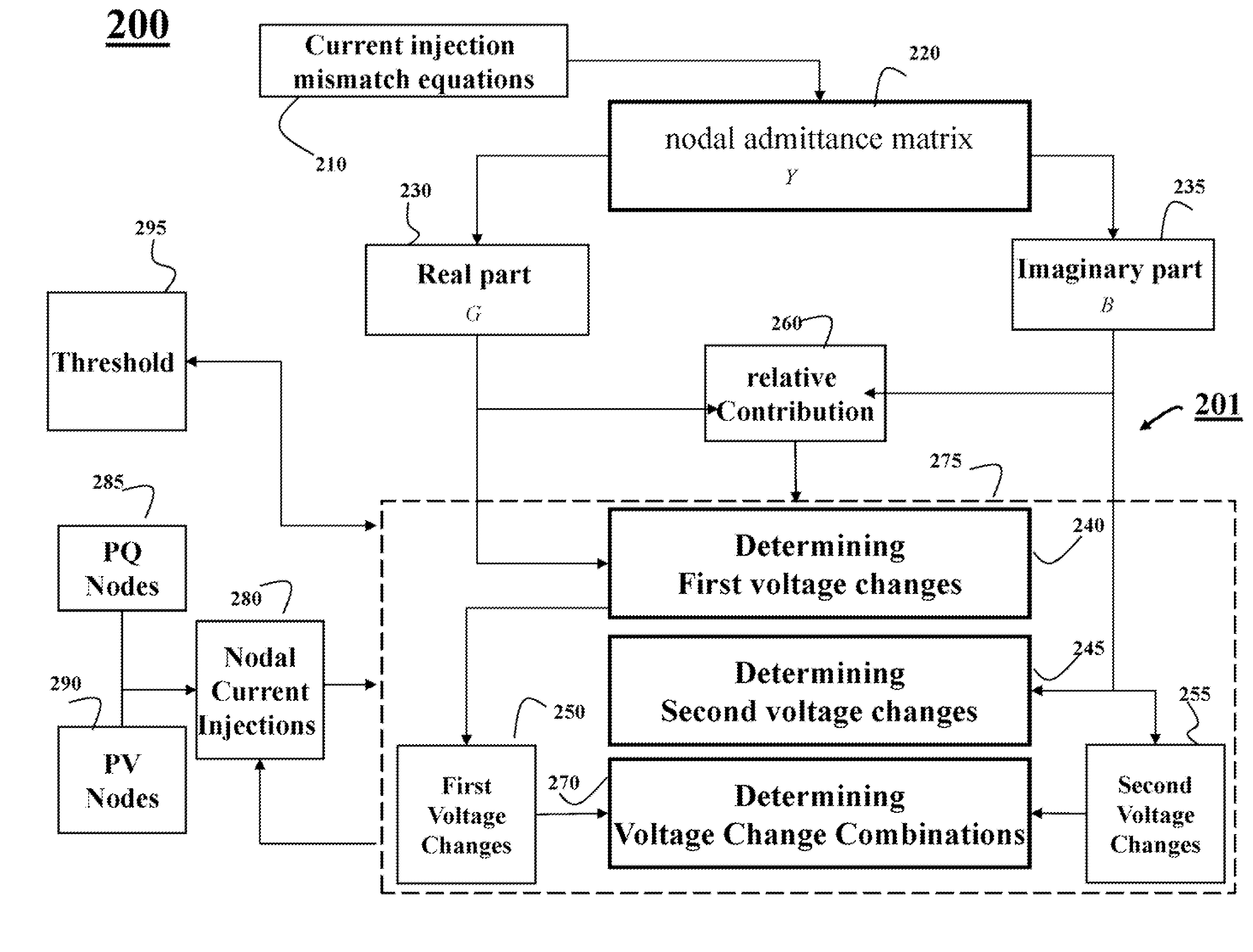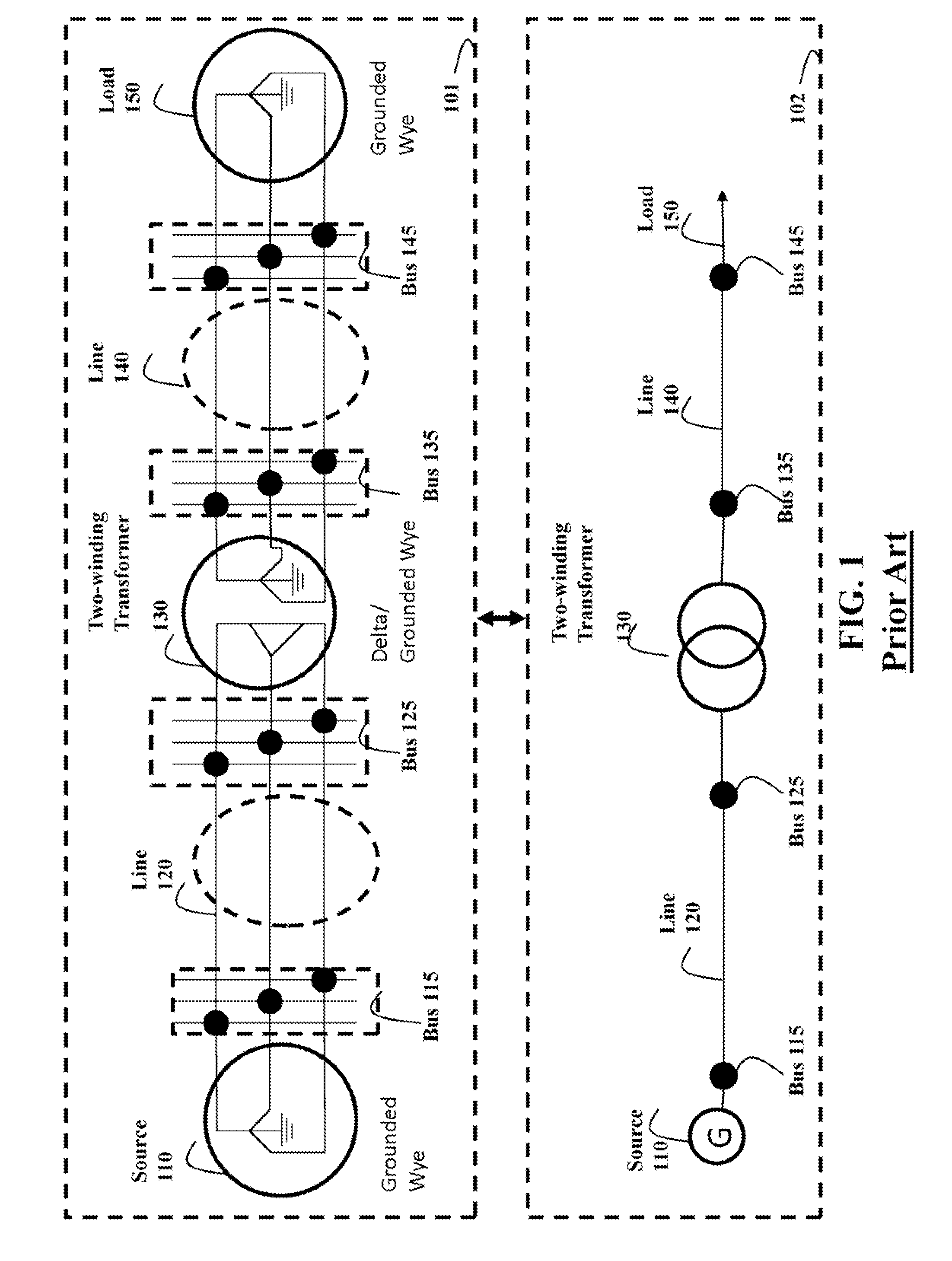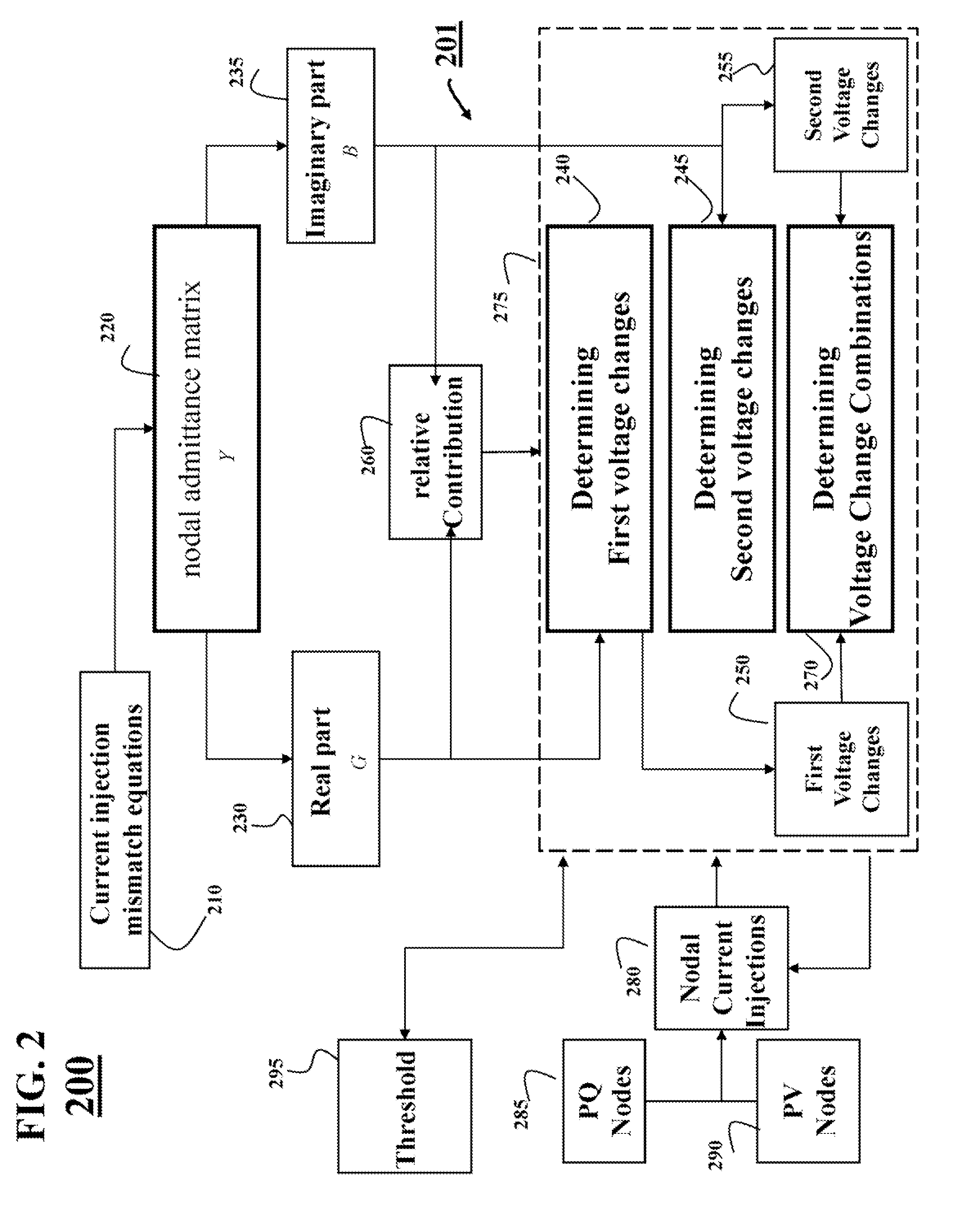Decoupled Three-Phase Power Flow Analysis Method for Unbalanced Power Distribution Systems
a power flow analysis and three-phase technology, applied in the field of three-phase power flow analysis for unbalanced power distribution systems, can solve the problems of slow power flow analysis and inefficiency prevent its use for real-time applications, so as to reduce the computational burden of power flow analysis, improve accuracy, and reduce the admittance matrix
- Summary
- Abstract
- Description
- Claims
- Application Information
AI Technical Summary
Benefits of technology
Problems solved by technology
Method used
Image
Examples
example
[0080]FIG. 6 shows a block diagram of a method 600 for analyzing a model of an unbalanced power distribution system according to one embodiment of the invention. Various embodiments of invention use at least part of the steps of the method 600.
[0081]In step 610, the slave bus of a zero-impedance branch is removed and the zero-impedance branch and its adjacent impedance branch are replaced with a new branch between the master bus of zero-impedance branch and one of adjacent branch buses as shown in FIG. 3. The nodal admittance of new branch is determined based on the nodal admittance matrix of adjacent branch and voltage and current amplifying factor matrices of zero-impedance branch. The load at the slave bus is modeled as an equivalent load at the master bus.
[0082]In step 615, the method determines the nodal admittance matrix of impedance branch connected with three phase PV buses with balanced voltages by replacing the three-phase PV bus with an equivalent single-phase PV bus mode...
PUM
 Login to View More
Login to View More Abstract
Description
Claims
Application Information
 Login to View More
Login to View More - R&D
- Intellectual Property
- Life Sciences
- Materials
- Tech Scout
- Unparalleled Data Quality
- Higher Quality Content
- 60% Fewer Hallucinations
Browse by: Latest US Patents, China's latest patents, Technical Efficacy Thesaurus, Application Domain, Technology Topic, Popular Technical Reports.
© 2025 PatSnap. All rights reserved.Legal|Privacy policy|Modern Slavery Act Transparency Statement|Sitemap|About US| Contact US: help@patsnap.com



